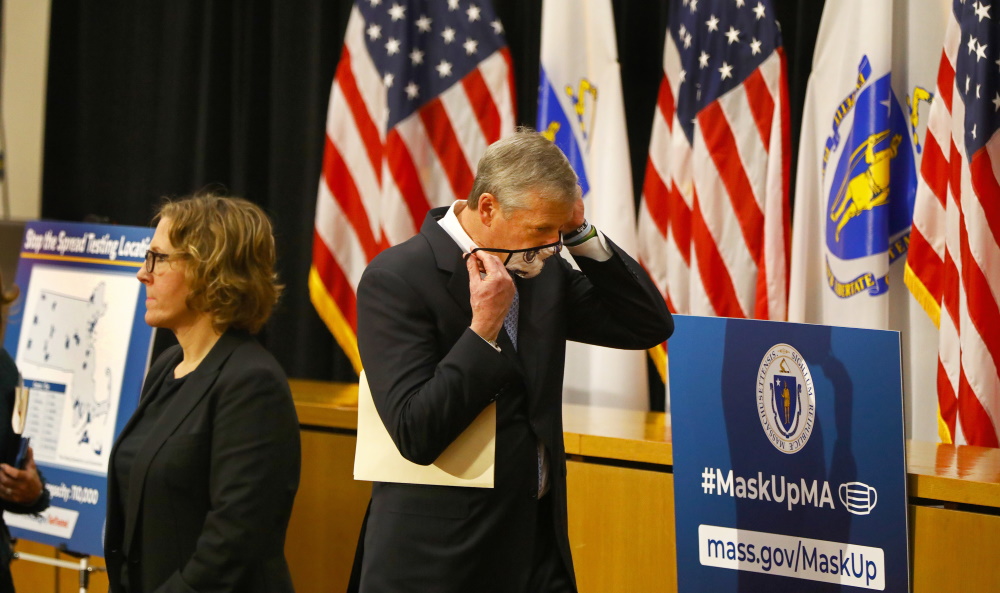With Thanksgiving celebrations being blamed for the “rapid increase” in COVID-19 infections over the past week, Gov. Charlie Baker on Monday announced an expansion of free testing and said hospitals beginning Friday would “curtail” inpatient elective procedures that can be safely postponed to free up bed space and staff.
Baker also said his administration is studying the post-holiday data to determine whether additional restrictions are necessary to stop the spread of the virus and take some of the pressure off hospitals. Baker said, “every option is on the table” if infections and hospitalizations continue to rise, but said he’d have more to say on further restrictions “soon.”
As of Sunday, 1,416 people were hospitalized with COVID-19, including 298 in intensive care units. Statewide, hospitals were operating at 68 percent of capacity, with 39 percent of all ICU beds still available.
Baker said, “Massachusetts is now experiencing a rapid increase in new positive cases in the wake of Thanksgiving, and in turn the number of people becoming ill and needing hospitalization is also increasing,”
Health and Human Services Secretary Marylou Sudders said the curtailment of elective procedures will be limited to inpatient treatments and procedures, and not outpatient surgeries or appointments for preventative services like mammograms, colonoscopies or regular pediatric checkups.
Massachusetts Health and Hospital Association President Steve Walsh said hospitals had become “stretched yet again by an influx of COVID-positive patients,” but have worked to make sure a widespread closure won’t be necessary as it was in the spring.
“As each hospital makes its own adjustments based on bed capacity and care demand, we urge every patient to remain engaged with their care team, to seek care when they need it, and to help our system by following public health measures. Hospitals are here for you, as they have been throughout this crisis,” Walsh said in a statement.
Baker, who said he planned to address the media five times this week, including on Wednesday about vaccine distribution, expressed frustration that the warnings from public health officials over the dangers of gathering for Thanksgiving were not heeded.
He said he spoke over the weekend with several mayors who are frustrated with him for not taking more aggressive action to curtail activities, but he said all of them also admitted to seeing people in their communities engaging in the risky behavior he has been warning about, including neighbors hosting informal gatherings.
In addition to making sure hospitals have the space and staff to treat COVID-19 patients, Baker announced an expansion of testing that includes up to 150,000 Abbott BinaxNOW tests will be distributed to community hospitals and health centers for rapid testing.
Baker, however, defended restaurants against being scapegoated as the driving force behind the increased rate of infection.
“There are many things that spread COVID and restaurants certainly play a role along with many others,” Baker said. “But honestly if you were to say to me the thing I worry about the most is still the informal gatherings, because there are no masks, there are no rules, there are no guidance, there are no time limits. It’s a completely different problem.”
Baker said the restaurants in Massachusetts operate under some of the strictest guidelines in the country, and do not present the same risk as gathering at a table in someone’s home with a large group for dinner, as occurred on Thanksgiving.
Over the week that ended Thursday, the Department of Public Health’s data shows that restaurants and food courts accounted for 24 clusters of COVID-19 and 103 confirmed cases, compared with the 21 clusters and 130 cases traced back to social gatherings.
The biggest source of transmission—9,393 clusters and 23,756—continues to be within households where the source of the original infection cannot be traced.
